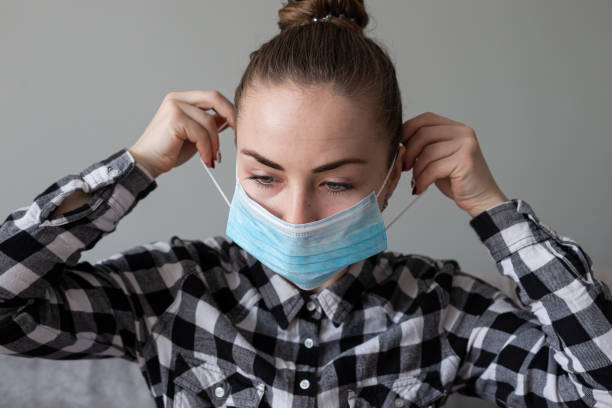
Face masks have become a main in many skincare routines, donation a variety of benefits depending on the type of mask used.
- Though, knowing when to include a face mask into your routine can be just as significant as alternative the right one. In this blog post, we will realize the different kinds of face masks, the best time to use them, how regularly to use them, how to prep your skin for a mask, and how to combine them into a multistep skincare routine. We will also discuss special reflections for those with sensitive or difficult skin.
Face Masks Understanding the Different Types
Investigating into the realm of face masks reveals a huge selection, each calculated with unique benefits and preparations to cater to various skin needs.
- Sheet masks, water-logged in serums, offer a hydrating and soothing experience, making them ideal for those seeking wetness and a plump complexion. Clay masks, known for their detoxifying properties, are excellent for deep cleansing and minimizing the arrival of pores, particularly useful for oily and acne-prone skin types. Gel masks, with their cool and soothing feel, are perfect for delicate or annoyed skin, providing relief and hydration without crushing the skin. Peel-off masks, on the other hand, specify in exfoliation and eliminating dead skin cells, contributing to a flatter and more radiant complexion.
- Each mask type symbolizes a specific purpose, from hydrating and restful to detoxifying and brightening, thus highlighting the importance of selecting a mask that aligns with your different skin concerns. This selection procedure ensures that you not only enjoy the ceremonial of masking but also witness visible developments in your skin’s health and appearance. Whether you’re pointing to combat dryness, control oiliness, soothe irritation, or achieve a healthy-looking complexion, there’s a face mask calculated to meet those needs. Attractive with the different types of face masks authorizes you to tailor your skincare routine, enhancing its effectiveness and your overall skincare experience.
The Best Time to Use a Face Mask in Your Daily Routine
Timing is vital when it comes to participating a face mask into your skincare routine. After cleansing, when your skin is free of layers and extra oils, is the ideal moment to apply a mask.
- This guarantees that the lively ingredients in the mask can fully fascinated by the skin, maximizing the benefits. While many people desire incorporating their face mask ceremonial into their evening routine, letting the fixings work overnight, a morning application can also be quite beneficial, particularly for masks designed to hydrate or enhance the skin, preparing it for the day ahead.
- Equally, if your mask contains ingredients like vitamin C or other antioxidants, smearing it in the morning could provide a defensive barrier against environmental stressors throughout the day. Additionally, some masks formulated for use right before a special event to give your skin an immediate boost of radiance and smoothness.
- Remember, the frequency of mask application should adjusted based on the type of mask and your skin’s particular needs. The goal is to accompaniment your skincare routine without devastating your skin. Whether morning or evening, ensure your skin properly prepped to accept the full spectrum of assistances offered by your chosen mask.
How Often Should You Use a Face Mask?
The occurrence with which you incorporate face masks into your skincare monotonous should carefully standardized to your skin’s unique needs and the exact type of mask you’re using.
- As a general recommendation, hydrating, soothing, or moisture-boosting masks that light on the skin can often used more regularly, even daily for some skin types. These masks tend to gentle and meant at providing a burst of hydration or soothing the skin, which beneficial on a more regular basis.
- On the other hand, masks with energetic ingredients aimed at deep cleaning, exfoliating, or those covering potent active ingredients designed for targeted worries should typically used less frequently. Masks such as stone, charcoal, or peel-off varieties, which work to purify and remove impurities, or those with acids and enzymes that endorse cell turnover, are most effective when used once to twice a week. Consuming these more intense masks too often can disturb the skin’s natural balance, leading to possible dryness, irritation, or overproduction of oil.
- It’s also worth noticing that your skin’s needs can alteration with the seasons, lifestyle factors, or even age, which may require changes in how often you apply certain types of masks. Attending to your skin and detecting how it responds after each masking meeting will guide you in creating a balanced agenda that keeps your skin looking and sensation its best. Continuously pay close attention to the references provided on the product’s wrapping and when in doubt, referring with a skincare professional can provide modified advice tailored to your specific skin concerns.

Prepping Your Skin for a Face Mask
Safeguarding that your skin well-informed and ready to fully benefit from a face mask begins with a thorough cleanse.
- This early step is dangerous to rid your skin of any surface impurities, excess oil, or remnants of makeup that could potentially delay the efficiency of the mask’s ingredients. Choosing for a gentle, pH-balanced cleanser is sensible to maintain the skin’s natural barrier. Next cleansing, exfoliation comes into play, helping as a means to slough off dead skin cells that can hinder the mask’s components from powerful deeply into the skin.
- However, it’s important to choose an exfoliation technique suited to your skin type—chemical exfoliates like AHAs or BHAs for a more profound exfoliation or a softer, physical exfoliator for sensitive skin types. It’s vital to remember that exfoliation should done with care, avoiding over-exfoliation which can lead to annoyance and compromise the skin’s health. After exfoliation, squish your face with warm water to solution away any exfoliant remainder and gently pat your skin dry with a clean towel.
- Your skinnow sufficiently prepared, presenting a clean, open canvas for the face mask. By following these introductory steps, you ensure that your skin can fully engage the nutrients and assistances the face mask has to offer, thus optimizing its effectiveness and flagging the way for a more radiant, healthier complexion.
Incorporating Face Masks into a Multistep Skin Care Routine
Joining a face mask into a covered skincare routine allows for targeted treatment and exploits the benefits of subsequent products.
- After cleansing your skin to eliminate impurities and exfoliating if essential to marsh away dead skin cells, the next step is the request of your chosen face mask. This arrangement ensures that your skin well-informed to absorb the full range of nutrients and energetic ingredients the mask has to offer. Once the mask has lightly removed—following the optional duration on the wrapping—the skin is at an optimal state for additional nourishment and treatment.
- This is the time to apply your serums, which can enter deeply into the skin cheers to the preceding steps. Serums shadowed by any specialized actions or spot treatments you may using. Lastly, lock in the benefits of your mask and serums with a conditioner to hydrate and protect the skin barrier. For daytime routines, don’t forget to accomplish with a sunblock to safeguard your skin against UV damage.
- Face masks can modified to your routine to discourse specific skin anxieties on different days, allowing for a customized skincare regimen that changes with your skin’s needs. For example, a hydrating mask power used one day, while a descriptive mask may kept for when your skin feels congested. This planned placement and collection of face masks within a multistep routine augment the skincare process, providing custom-made benefits and promoting a healthy, glowing complexion.
Special Considerations: Sensitive and Problematic Skin
For persons with sensitive or difficult skin, selecting the right face mask includes careful consideration to avoid worsening any skin issues.
- Masks expressed with soothing, natural ingredients and without possible irritants such as fake fragrances, alcohol, and synthetic dyes are ideal. Elements like aloe vera, chamomile, and hyaluronic acid can offer soothing hydration and support the skin’s natural remedial process without causing undue stress. It’s also vital to order masks specifically branded for sensitive skin, as these products have characteristically undergone testing to ensure they are calm on delicate skin types.
- Leading a patch test on a subtle area of skin before using a new mask is a intelligent step to prevent unwelcome reactions. Moreover, those facing specific skin challenges should seek guidance from a skincare skilled who can provide tailored advice, ensuring that any mask or skincare creation introduced to their routine will nurture rather than bother. By sensibly selecting and challenging face masks, those with sensitive or difficult skin can still enjoy the spoiling and benefits masks offer without cooperating their skin’s health.




5 Comments